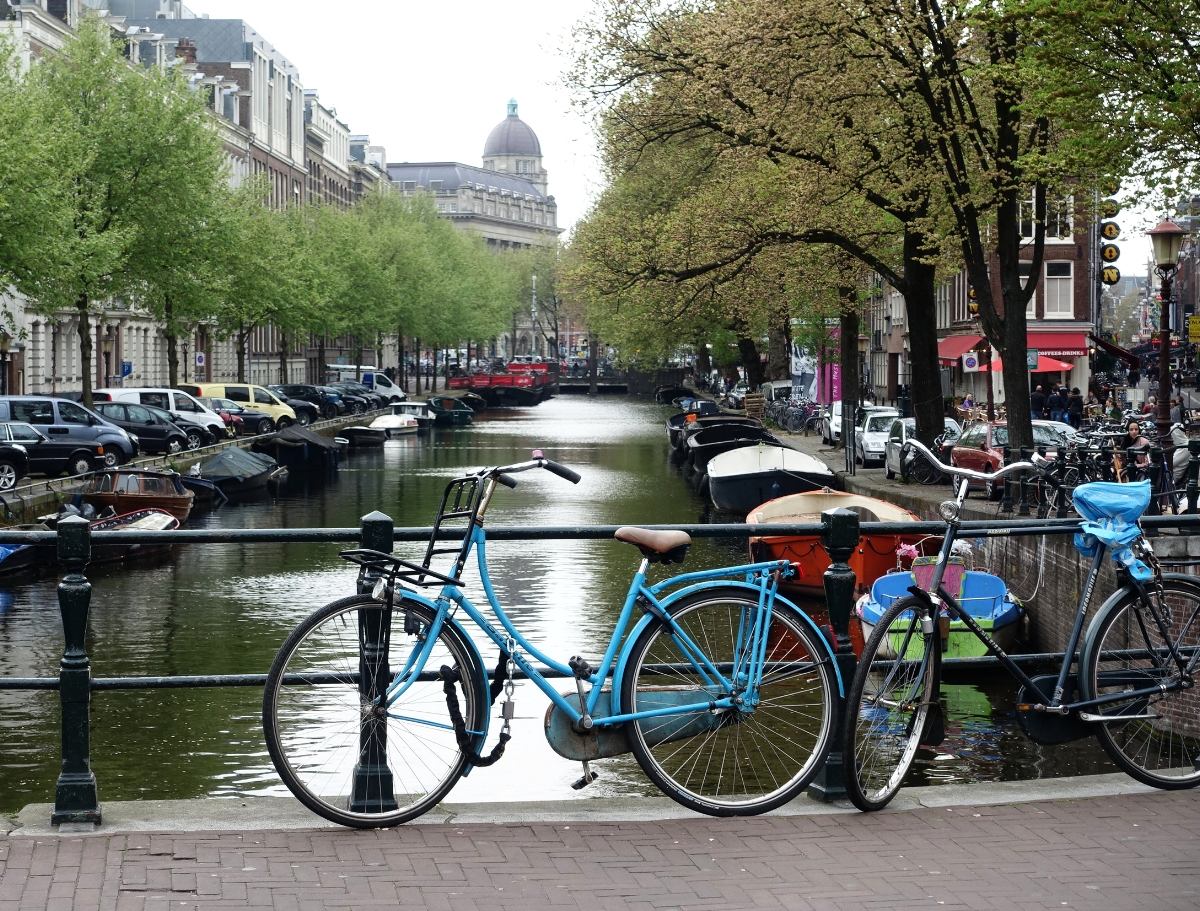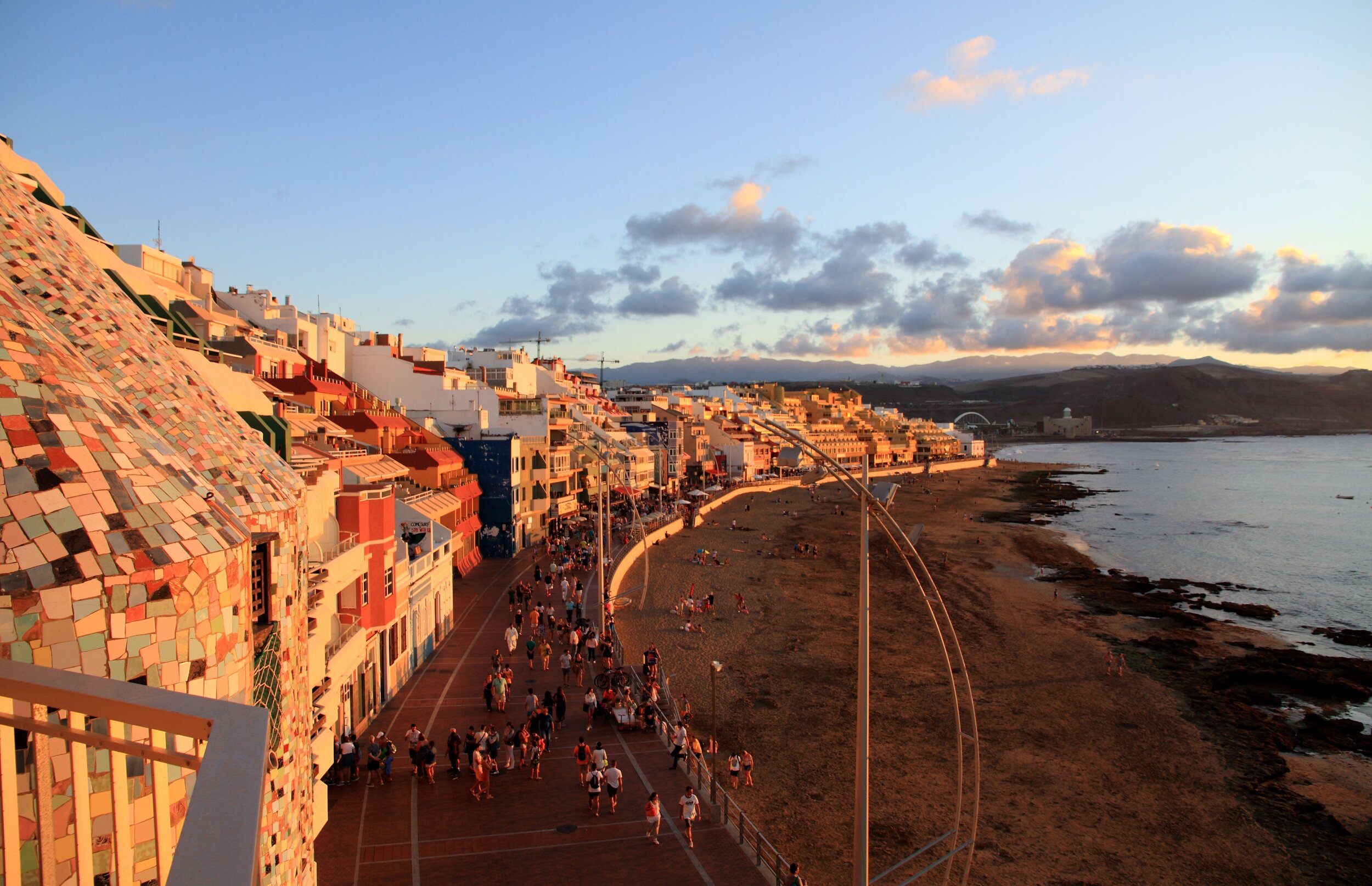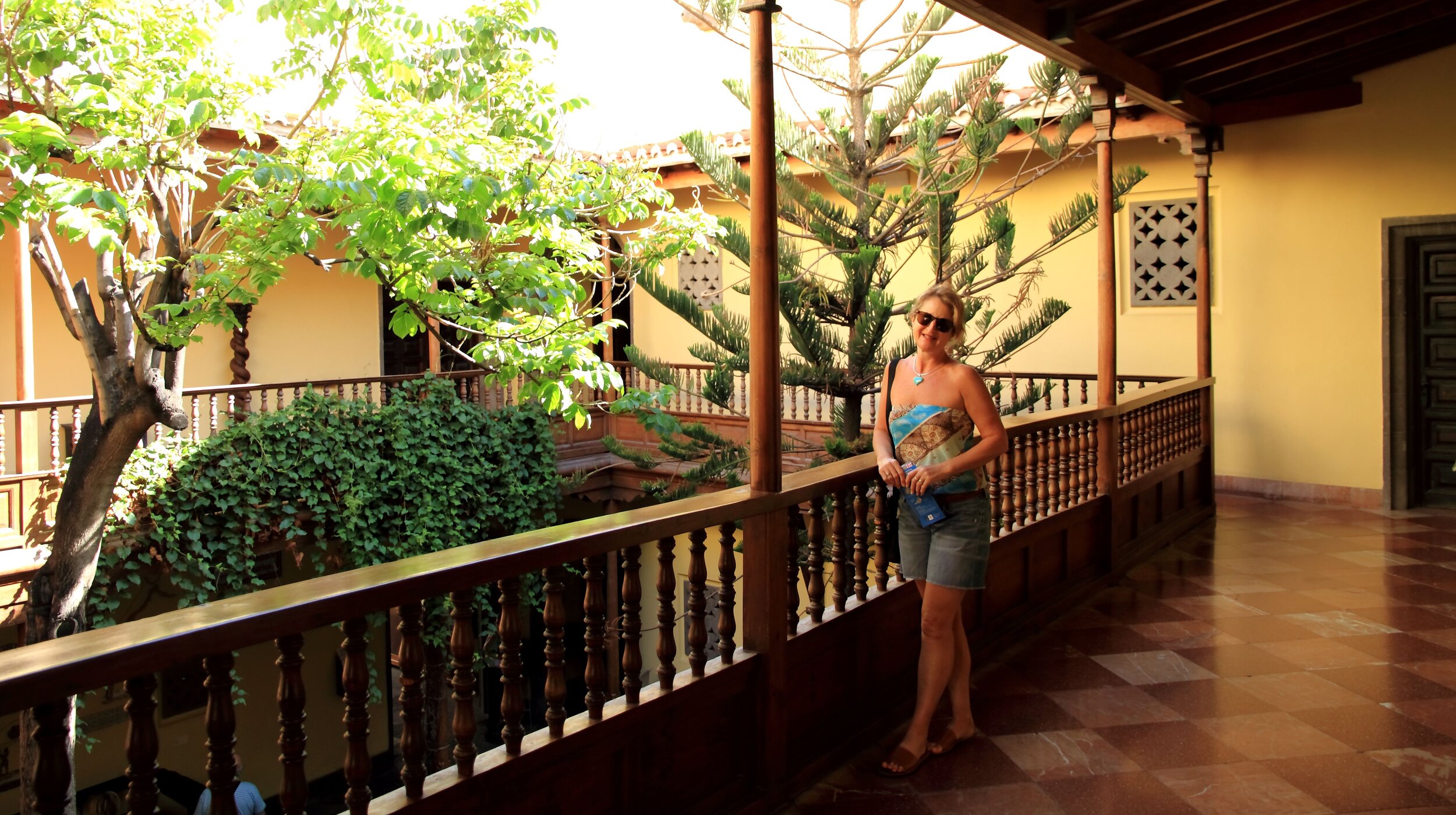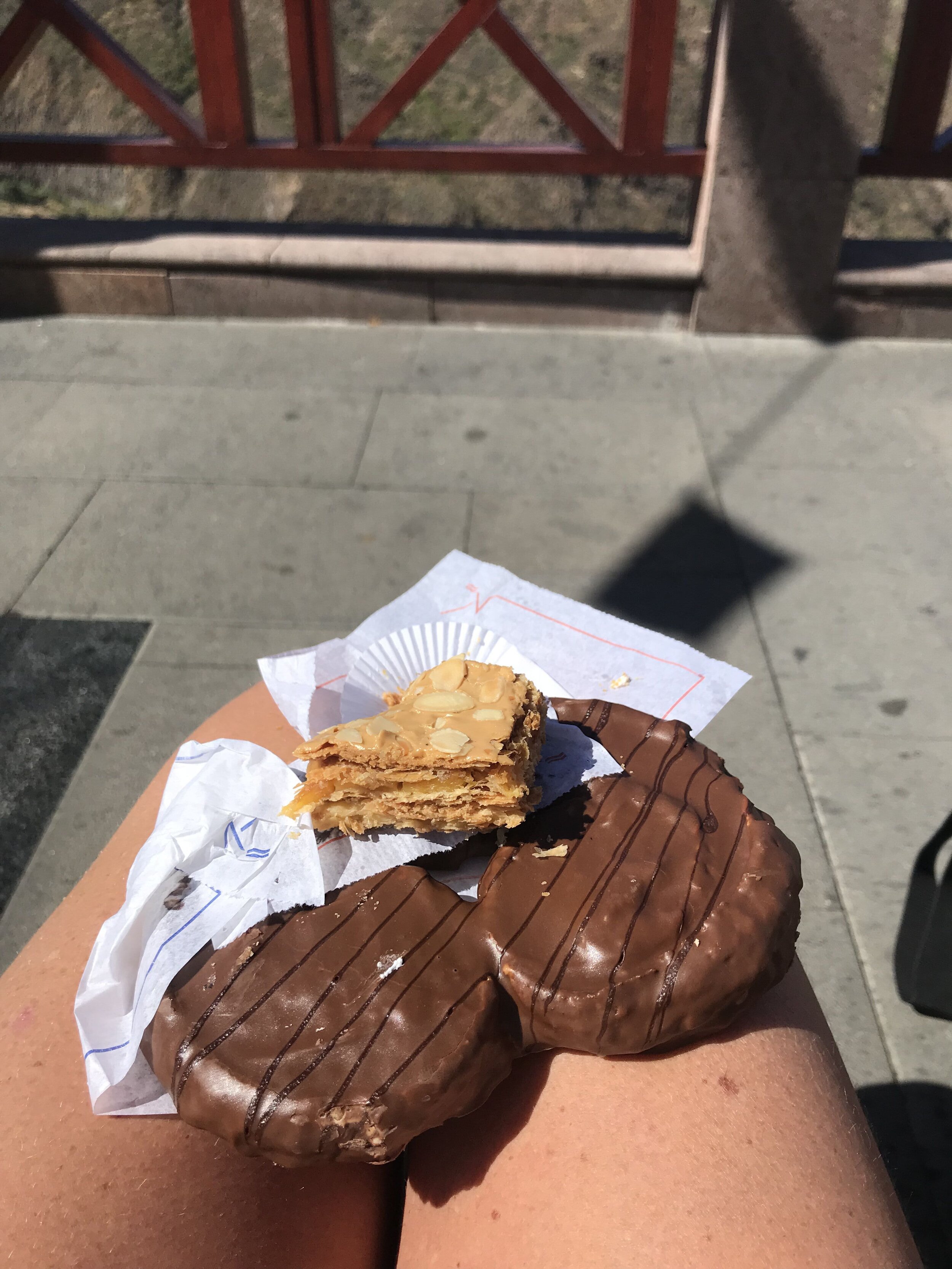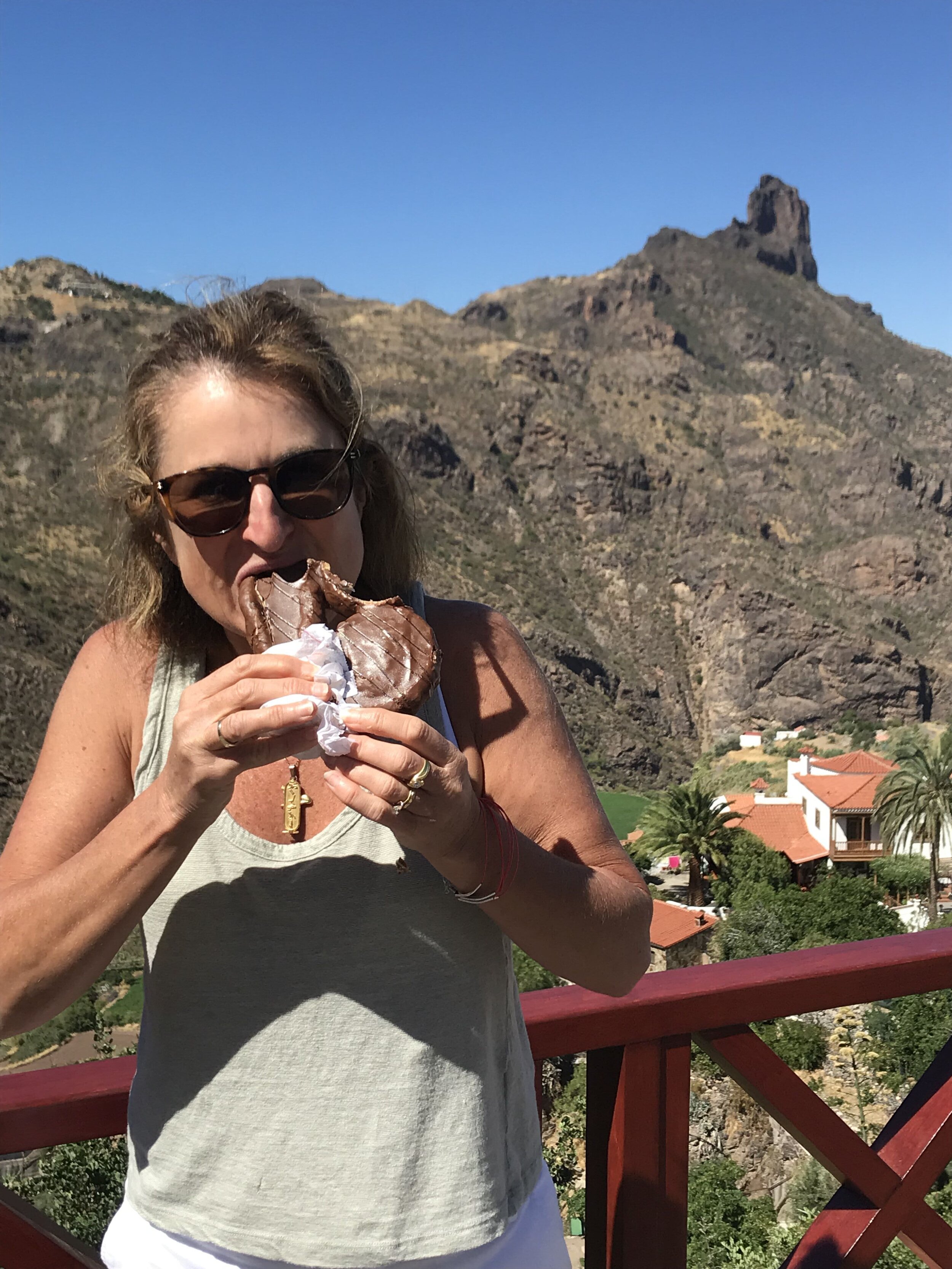The Canary Islands - Gran Canaria
/Introduction
Dodgy Knees recently published a post from Ken’s brother Brett and wife Linda on their trip in 2018 to Chefchaouen – Morocco’s Blue City. On the same trip they also visited the island of Gran Canaria in the Canary Islands. Despite its reputation as a tourist hotspot they found it to be remarkably uncrowded and relaxing. Definitely recommended. Here is their report.
Getting to Gran Canaria.
If your next overseas trip includes Europe and you have the time, we’d recommend that you consider a side trip to the Canary Islands. Despite being a popular destination for tourists, the majority head for the megaresort area of Maspalomas. We visited in September, avoided Maspalomas, and found ourselves on uncrowded beaches and exploring one of the Canary’s main islands with few others.
las palmas
It is a destination easily reached from mainland Spain. As an autonomous region of Spain, budget local carrier Vuelling services the Canaries from most Spanish cities providing numerous affordable and convenient departure points for your adventure…… as well as an excellent excuse to incorporate other parts of Spain into your itinerary.
Located in the Atlantic Ocean off the coast of North West Africa and roughly 100km west of Morocco, the Canary Islands is a small archipelago consisting of 7 main islands. The western group, made up of Tenerife, Gran Canaria, La Palma, La Gomera and Ferro islands, and the eastern group comprising Lanzarote, Fuerteventura Island and six smaller islets. Drenched in history and home to rainforests, vast arid tracts of sand dunes, soaring peaks that rise from the ocean floor and some of the finest beaches in the world, the Canary Islands will satisfy all tastes. With just under a week to visit the area we opted for the one island that casts its geographical net the widest, a virtual micro continent in its own right, Gran Canaria.
Las Palmas
As part of a larger journey in September 2018, and after spending several days wandering the picturesque seaside city of San Sebastian and feasting on pintxos (Basque style tapas), we were looking forward to some warmer weather and a little more activity and adventure in Gran Canaria.
Pintxos, San Sebastian
Our early morning flight with Vuelling departed from nearby Bilbao. It was affordable, on time and after three smooth hours in the sky we were landing in the sunny Gran Canarian capital, Las Palmas (LPA). The airport is located on the eastern shores of the island and is in close proximity (30 mins south) of the city and accommodation strip. The bus network is reasonable and services the populated east coast and southern coastal resort region of Maspalomas quite well, however, if you intend to explore the mountains or venture across to the western coast, then a car really is your only option. Roads are good and traffic away from the city is light or non-existent. Car hire is plentiful at the airport with all the usual suspects however, after receiving a recommendation from our Airbnb hosts, we chose to go with a local outfit, CICAR (Canary Island Car Hire).
on the promenade at playa de las canteras
Depending on which blog you read Las Palmas is highly regarded as having one of the best city beaches in the world, Playa de las Canteras. It’s also an excellent base from which to explore the capital as well as the interior. The 3.5km of golden sand enjoys an excellent sheltered location on the north-eastern tip of the island and is lined with a pedestrian promenade buzzing with bars and restaurants that capture the amazing Atlantic sunsets. Other fun facts such as having the world’s most pleasant climate, almost year round swimming in safe and clean waters, devoid of sand flies or bugs, a reef for snorkelling and a year round surf break, it’s no surprise the beach attracts the locals in droves. Our Airbnb apartment overlooking the promenade was a modest studio, however the elevated location, outdoor ”sunset” balcony, and proximity to everything the immediate area had to offer, had us wishing we had booked more than 3 nights. Hotels, apartments and Airbnbs are plentiful in the area and at a fraction of the cost of similar beachside locations around the world.
our balcony sunset view
With a rich history dating back to 1492 when Christopher Columbus (Cristobal Colon in Spanish) first visited the port on his maiden voyage to the Americas, the old town and in particular the area known as Vegueta, is worthy of a half day visit. The local bus is simple to navigate and it’s about a 10 minute walk from the beachfront to the main road where buses into the historic town run every 10 minutes, for the 15 minute run. Alight at bus stop Mercado de Vegueta.
casa de colon
Well sign posted in the old town is the Casa de Colon, an excellent museum housed in a magnificent historic mansion previously owned by the governor. While it’s probably a stretch to call it “Colombus’s House” apparently, he did doss down with said Governor for several nights during his various voyages to the Americas, all of which are detailed in the museum. Other explorers and various artworks are also included, however it’s Columbus who’s the star of the show.
casa colon
There’s a plethora of old nautical items including maps and navigation instruments and with excellent multilingual explanations, it’s well worth the 4 Euro entrance fee, 2 Euro concession, free under 18. Get there early and you will have the place to yourself….. apart from the two magnificent macaws that patrol the courtyard.
the macaws of casa colon
The pleasant uncrowded cobbled streets of Vegueta and the surrounding old town are well worth a stroll after visiting the museum. Be sure to take in the majesty of the 15th Century Gothic Cathedral (Catedral de Santa Ana) located in the plaza of the same name before heading back to Las Canteras for a well-earned dip in the warm water and an afternoon thirst quencher on the bustling boardwalk.
catedral de santa ana
The population are predominantly of Spanish origin (87%) with Others (13%), mostly from other European Union countries. It is blessed with year round sunshine and an active lifestyle. The fit bronzed bodies of the scantily clad locals can be in rather stark contrast to the newly arrived pasty tourist. All shapes and sizes litter the beach with punters seemingly indifferent to their fellow beachgoers despite their often lack of attire. Quite unprecedented for a crowded city beach and quite liberating for the visitor. Tucked away in its own corner of the globe Las Canteras really does march to the beat of its own drum.
Mountainous Tejeda
With another full day to spare, we decided to head inland towards the picturesque mountain village of Tejeda. The winding road up the mountain is narrow and slow going so take care and your time. Depending on which route you take the distance is only around 50km but allow at least 2 hours including brief photo stops. About 7 km prior to reaching the main village of Tejeda on the GC-15, you will reach the pinnacle of the mountain pass, Cruz de Tejeda (Cross of Tejeda). There are several small restaurants and souvenir shops and the small village is also home to a sombre carved stone cross that marks the geographical centre of the island, hence the town’s name. At 1580m above sea level and perched on the edge of a volcanic crater, the weather can be windy and substantially cooler so be sure to pack a long sleeve. Spectacular vistas of the surrounding volcanic ravines can be enjoyed from several vantage points in town, however if you can spare about an hour (return) it’s well worth hiking the narrow rocky trail that snakes up from the behind the village to the nearest peak. From here, you will experience some truly breathtaking views of the surrounding landscape and on a clear day, as it was for us, the highest peak on Spanish soil, the towering volcanic pyramid of Teide on neighbouring Tenerife, is clearly visible.
the view from cruz de tejeda. Teide VOLCANO ON TENERIFE CAN BE SEEN IN THE DISTANCE (TOP RIGHT HAND CORNER).
From Cruz de Tejeda it’s another 15 minutes to the main village of Tejeda. The road plunges 600m in elevation in a 7km stretch so it makes for some fun driving. The pretty village sits on the slopes of the crater and, as well as offering serene mountain views, it also boasts many archaeological remains such as graves, caves, and rock engravings. The town is surrounded by terraced cornfields and orchards but is best known for its almond treats and sweets, available in all their sugar and chocolate laden glory at several fine bakeries in the village. The celebration of all things almond culminates at the Almond Blossom Festival when the local trees bloom in January.
West Coast
For those who enjoy a good scenic coastal drive it doesn’t get any better than the GC-200 that clings to the slopes of the rugged peaks in the north-western corner of Gran Canaria. Lauded as one of the greatest coastal drives in the world it’s also said to be the most dangerous road in Spain. If you’re reasonably confident behind the wheel we urge you to take the plunge, not literally but with the 25km of road that sits anywhere between 200m and 900m above the swirling Atlantic there is often barely room for two vehicles to pass so take care. Trucks will alert you to their presence by sounding their horns and with more hairpins than a Greek salon your passenger will be the only one enjoying the view as you negotiate the meandering bitumen that hugs the sheer cliff-edge drops where the mountains literally plummet abruptly into the sea below.
spectacular views on the gc-200
It’s also an excellent excuse to visit the quaint seaside fishing town of Puerto de las Nieves for a seafood lunch prior to tackling the drive. Due to the inhospitable landscape, there is no accommodation on offer in the immediate area, so you are best following the road its entire length towards Playa de Mogan and the coastal strip of the southwestern part of the island. Here you will be spoilt for choice. The region attracts many Europeans and has an abundance of apartment complexes and hotels, many of which are foreign owned.
tejeda
Airbnbs are also plentiful and often you’ll be housed in a privately owned apartment within a larger resort complex complete with all the creature comforts. Having said that when we were there in mid-September crowd numbers were low and we often only had to share the beach and the local fine seafood Restaurant (Vistamar) we adopted at nearby Playa de Tauro with a handful of others.
view from our apartment, playa del cura
Our elevated apartment on the hill at Playa del Cura afforded magnificent views of the nearby blank sand beach of the same name as well as the fine golden sands of de Tauro. The mountainous terrain along this stretch will ensure that most digs will offer excellent coastal views.
playa de tauro
The barren landscape is not conducive to many activities so you will only need a couple of days here to enjoy the many cocktail bars, restaurants and beaches. After brushing up on our tans in relative peace and quiet for two days, it was time to depart for the next leg of our adventure. It was an easy 40 minute drive on the main GC-1 highway to the airport, after a brief detour to the mega resort region in the south to see what all the fuss was about. We were pleased we’d spent our time enjoying a little less humanity and a little more culture than what was on offer in Maspalomas.
tejeda
Conclusion
Gran Canaria really was an unexpected highlight of our travels and we are already planning a return journey to explore more of the Canaries. With its enviable climate, rich history, fine Spanish cuisine, pristine beaches and laid back locals its broad appeal will satiate the fussiest of travellers.
Brett and Linda Hardaker

